I really am happy that NASCAR seems to be enjoying an uptick in attendance at some tracks this year, but I can’t help but notice that one contributor to that development is the number of new – or at least sort-of new – venues, where the novelty of Cup racing certainly helps bring folks out – and you hope what they see and experience brings ‘em back.
It occurs to me that, if we set the way-back machine truly WAY BACK, we might see that, the more things change, the more they stay the same.
With Iowa, last weekend’s success story, it’s especially that way. It had been 71 YEARS since the NASCAR traveling circus came calling, and back then in 1953 at Davenport Speedway, what was then the Grand National Series didn’t even bring along half a dozen regulars. That small-but-select group, including winner Herb Thomas, Buck Baker, Lee Petty, and Fonty Flock – raced in a 14-car field otherwise made up of locals/regionals. Granted, those included all-time Midwestern great Ernie Derr and follow Iowan Johnny Beachamp, forever immortalized for that photo-finish with Petty in the first Daytona 500, but still, the race of the year in Iowa this was not.
After hearing your grandfather talk about that race, though, I guess you buy tickets to the 2024 follow-up.

Davenport Speedway survived its brief encounter with NASCAR and survives to this day. (Photos from Done Right TV and Dirt on Dirt)
To a lesser extent, Nashville will offer similar novelty in a couple of weeks, and then we’ll see if novelty carries over for a second year in Chicago, or if we’ll see the L.A. Coliseum scenario play out with reduced attendance each subsequent year.
So how does that harken back to those dark days only a handful of living fans remember? Well, here’s a look at how scheduling went 70 years ago. In 1954, Bill France put on 37 Grand National shows at 31 different tracks, a dozen of which were new to the schedule. The next year there were 45 races, and 14 of the tracks they ran were new. In ’56, there were 56 races and again 14 new tracks.
Only 12 tracks were on the schedule for each of those four years (1953-56). About 30 appeared in only one season’s schedule.
But wait! What does that dropout rate do to the “novelty” theory? Might shoot a decent-sized hole in it, but my guess is that it also shows that the GN tour wasn’t as impressive when it ventured farther from home. We noted that, at Davenport in ’53, ticket buyers only saw a handful of true traveling NASCAR stars, and that seems to have been the case lots of other times. The next year at Sharon Speedway in Ohio, fewer than half the 22 starters were true GN regulars – and it rained, causing the race to be stopped 40 laps short of the planned 200, which probably didn’t have folks talking about it afterward, either, at last not for the right reasons.
At Airborne Speedway in Plattsburgh, N.Y., the next season, another 16-car starting field included only about half a dozen tour regulars, whether or not you include Julian Petty, Lee’s brother and Bob Welborn’s car owner, who seems to have been a start-and-part in Bob’s backup car.
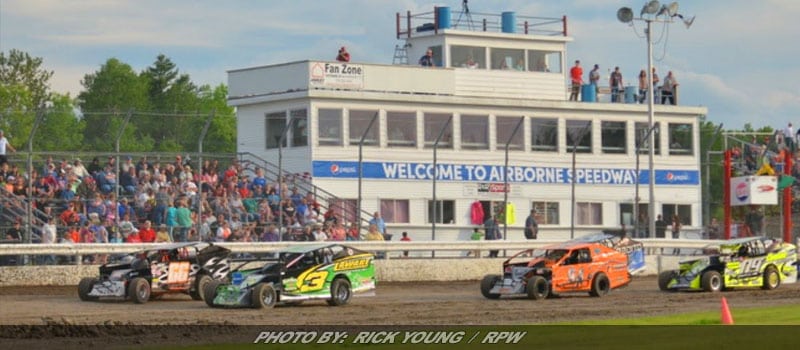
I could pick out a 1956 example, too, but you get the point. These races were not promotional works of art, so it’s no wonder Davenport didn’t return to the schedule in ’54, nor Sharon in ’55, or Plattsburgh in ’56.
But clearly novelty was part of Big Bill’s plan, as he tried to build fans in Iowa, way-northern New York, on the Pennsylvania-Ohio border. There were races all over the place, and we won’t even count the ones on the West Coast, that catered almost exclusively to drivers and teams on that side of the country and sometimes were scheduled the same day as a race on the East Coast. Presumably, it was all part of Big Bill’s plan.
These days, the plan is to see if Iowa draws better than one of the tracks that has lost a date (or will lose one). Mexico may get its chance next.
I’m not optimistic, but I hope it works.
Frank’s Loose Lug Nuts
Obviously, NASCAR wasn’t nearly as popular in those days as it is today – especially not outside the Southeast; many of the one-hit-wonder tracks were a long way from Charlotte or Atlanta. But what popularity it had was probably in part due to having fans of a lot more kinds of cars. In the 1954 Daytona Beach-Road Course race (predecessor to the 500 and current speedway), no fewer than 13 different makes of car were in the starting line-up. There was even a Willys.
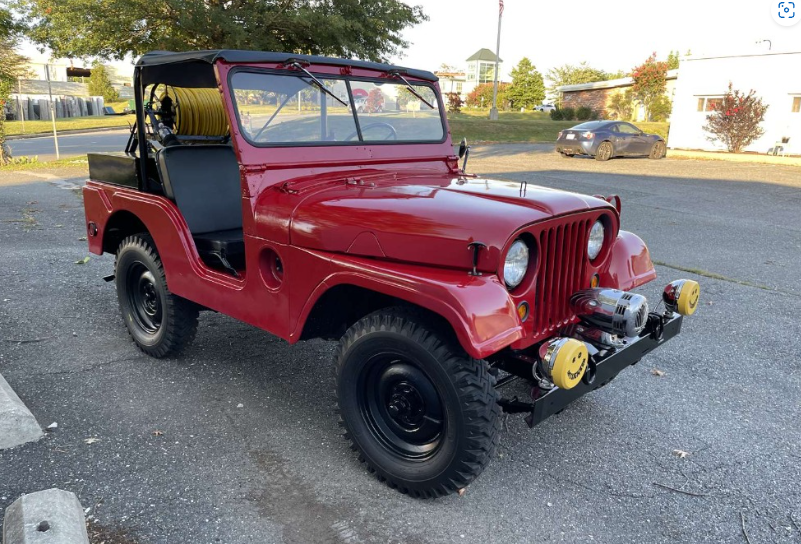
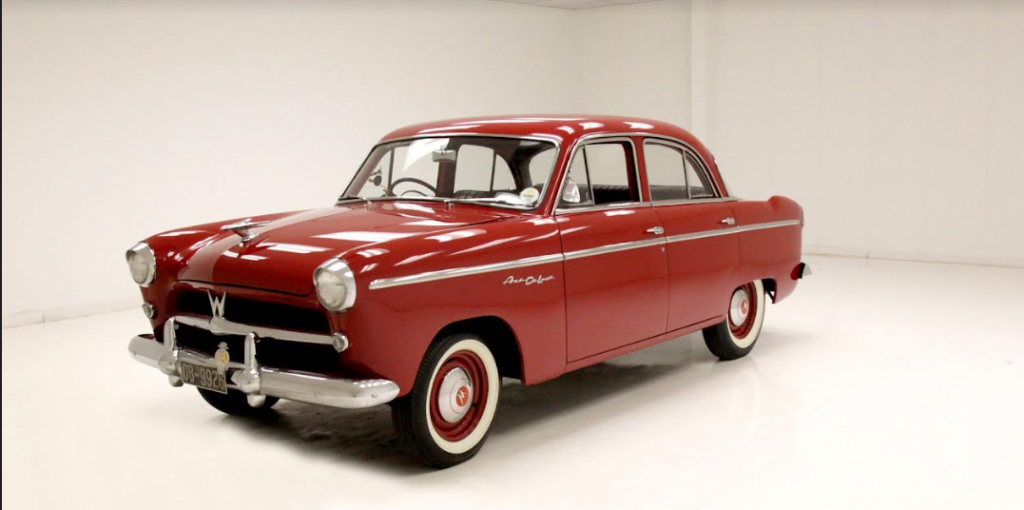
Of course, it was easier to be a fan of your favorite brand back then, because the race cars really were Chryslers, Oldsmobiles, Hudsons, and Willyses, not NASCARs. The Daytona brain trust really wants another manufacturer or three to join the sport, but if they all look alike and use the same parts, who really cares?
Traveling Men
We all kept our eyes on Kyle Larson the other weekend to see if he could pull off the Indy/Charlotte double, and since Kyle’s a pretty good guy and hard not to like, we were disappointed when the weather kept it from happening. But while the Indy/Charlotte double is impressive in any context, it was kind of the norm for those back-in-the-day guys who suffered through the schedules Big Bill France threw at them.
Take this one: Over the July 4 weekend in 1953, NASCAR sent its “stars and cars” to the Monroe County Fairgrounds near Rochester, N.Y., for a 200-lapper on Friday, July 3. Then, just for fun, he scheduled a July 4 race – the NEXT DAY – at the Piedmont Interstate Fairgrounds in Spartanburg, S.C.
That’s a distance of about 800 miles and with today’s highways, it would still take you over 12 hours to make the drive. Think about 1953 roads.
Three drivers ran in both races: Herb Thomas and Lee Petty, who each got a win, and Dick Rathman. They had to have flown between tracks, but remember, flying was a bit different back then, too. I hope none of them had to drive home after the Spartanburg race.
It took Winston, I guess, to cure NASCAR of the crazy schedule habit, In 1969, three years before Cup racing began, NASCAR convinced most of its regulars to race the Firecracker 400 at Daytona on Friday, July 4, and then haul butt 900 miles to Dover, Del. (14 hours on today’s highways), to inaugurate the new Dover Downs Int’l Speedway, for a 300-mile race two days later. Incredibly, 20 drivers ran both events. You can take those “Iron Man” events on television and pitch them in with the used oil, for all I care. These guys were tough.
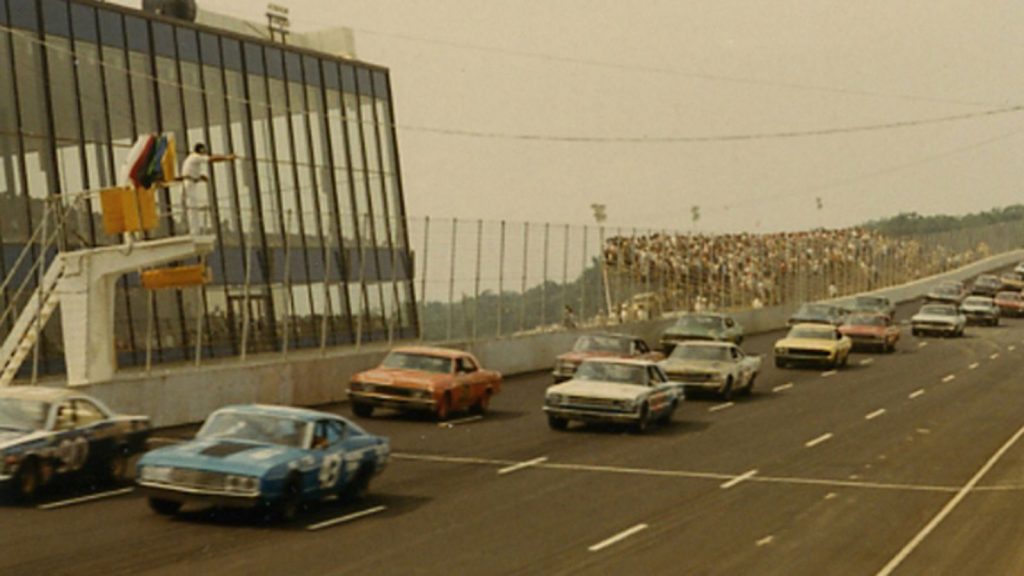
A Final Note
My neighborhood in South Central Pennsylvania is die-hard sprint car country these days, although dirt late models will bring the fans out, too. Still, most of the tracks go back decades, and most have seen a NASCAR race or two. Lincoln Speedway leads the way with seven Grand National/Cup events between 1955-65, plus a Convertible Division race in ’56, a Grand National East race in ’73, and – most forgotten of all – three NASCAR Eastern Late Model Division races in 1961-62. That class, which NASCAR definitely never talks about, was a means to give race dates to tracks that might have been part of the Short Track Division, had it not folded after 1959. New Yorker Jim Reed, who dominated the Short Track Division, also won the championship for the Eastern Late Models in two of their three seasons in existence.
The 1973 Lincoln Grand National East race – that was the year NASCAR tied this dying division in with ARCA to extend its life a year – was paired with one at Selinsgrove Speedway, which is a sweeping, big half mile about 100 miles to my north. I’ve been there a couple of times already this year with the PA Sprint Series, the economy (IMCA/RaceSaver) sprint cars for which I do some writing and photography. There, as well as at Lincoln and Williams Grove Speedway, which had a GN race back in 1954, it’s fun to sit there and dream of those days.
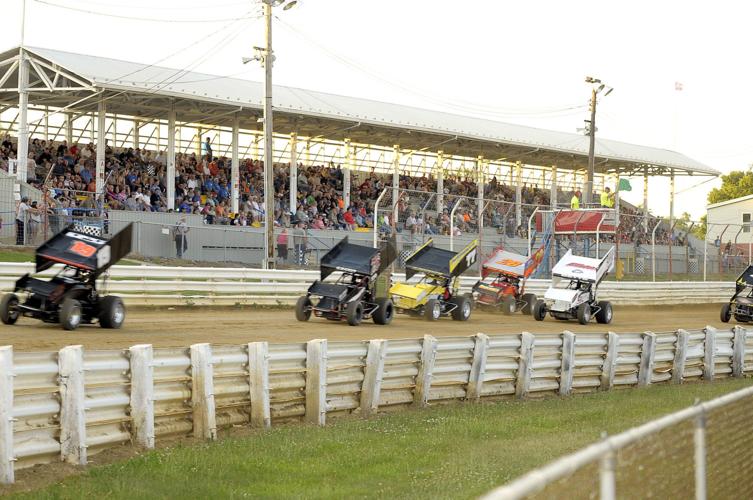
This photo is a few years old, but the PA Sprint Series, with which I volunteer, looked similar to this going down the frontstretch in front of Selinsgrove Speedway’s historic covered grandstand last week. If I squinted just right, I could imagine the lead sprinter was actually Tiny Lund in his Camaro leading every lap to win the 100-lap NASCAR Grand National East race run at the track in 1973. (Photo from standardjournal.com)
PHOTO CREDIT NOTE:
The cover photo is from a story, “NASCAR in PA,” on the website VintageSprintCars.com
Frank Buhrman
Editor’s Note: Here’s the picture of Dick Joslin Vivian referred to in comments below:
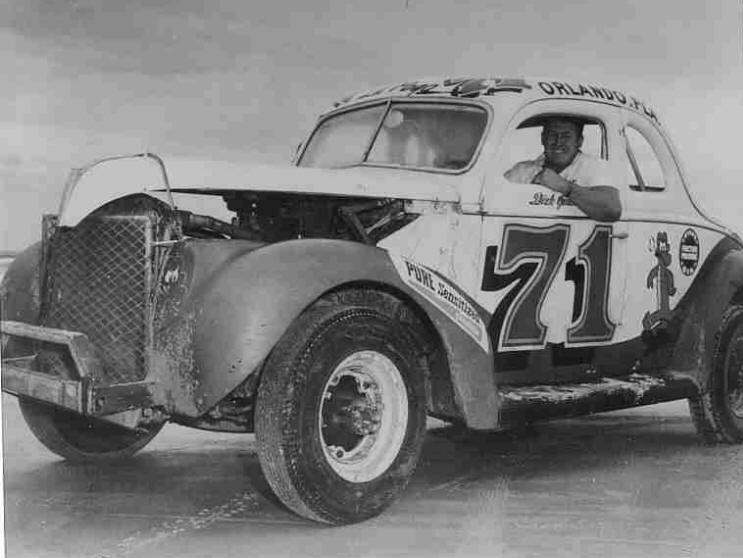



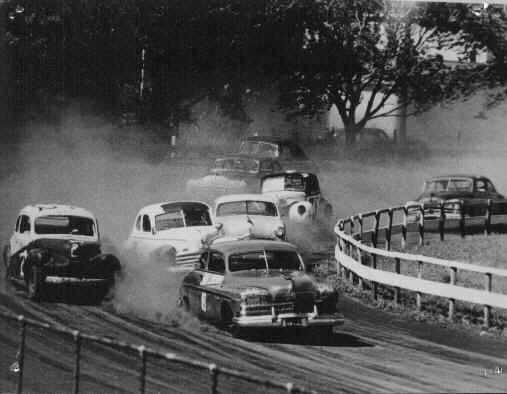
“The more things change…”
Frank, thank you so much for this article on the old days. Loved reading it and will be reading it again, just to be sure I did not miss anything. You must have done a lot of research to put this one together and share so much with us.
I have a couple of things I would like to add. Being a Senior in life now, my mind wanders back to yesteryear and I think of how things used to be all those years ago. This took me back and also took me to the state of the sport today. While I don’t always agree that older was better, in some things it seems like it might have been. Thank you.
I am going to add something personal here. Many of you have heard me speak of my Mentor, Dick Joslin, from time to time. The following is an excerpt from a site I go to once in a while:
“Dick Joslin’s biggest victory came on the beach at Daytona in the 1954 100 mile Sportsman race.
He’s shown here with his familiar red and white ’39 Ford coupe after the difficult run on the
4.1 mile beach-road course.”
Thanks to the “Marty Little collection” for this.
I will be sending a picture to Berra to see if he can add it.
Thank you again, Frank.
Vivian, you are indeed fortunate to have the Joslin memories. What wonderful links to what we consider the glory days. As long as you can draw those back to mind, you have a relief valve when today’s racing disappoints too much.